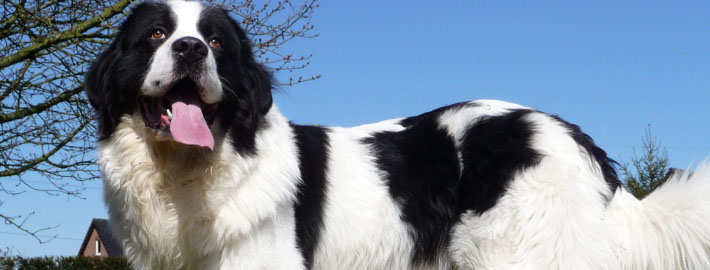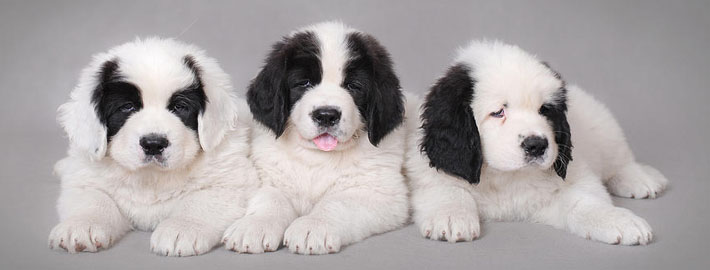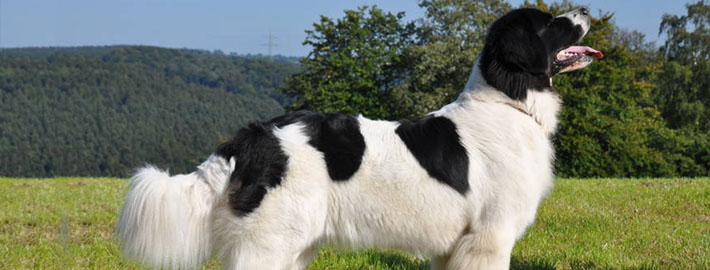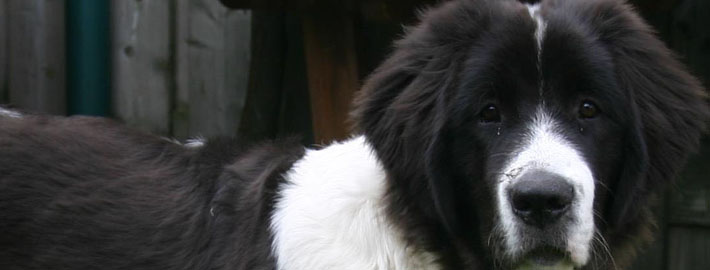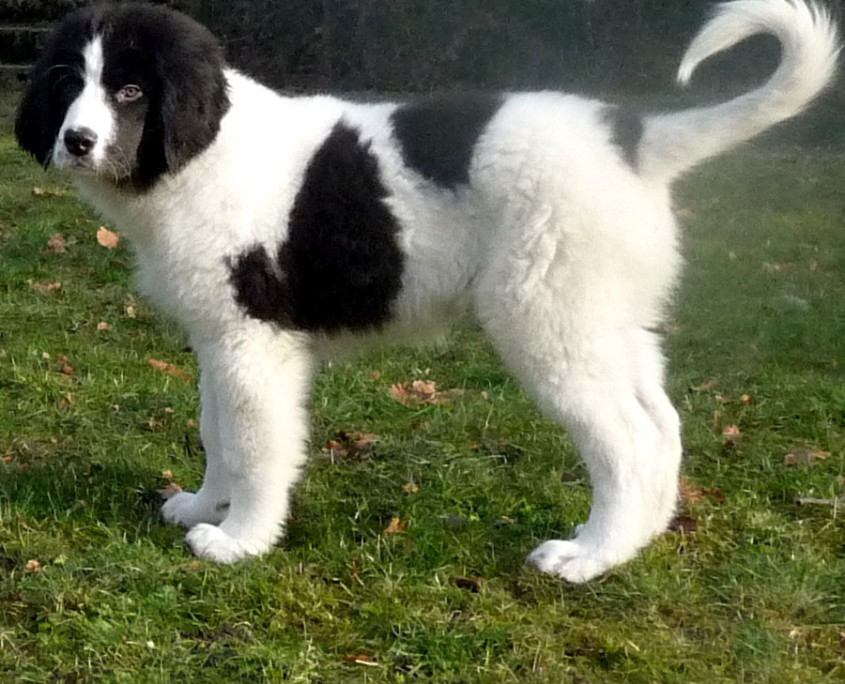What makes the Landseer Unique?
The Landseer Newfoundland dog is known for its sweet disposition, gentleness, and serenity. They enjoy swimming, and tend to drool, though not as much as some other giant breeds. While the Landseer European Continental Type is also sweet, affectionate and enjoys swimming he is quite different from the Landseer Newfoundland in regard to response, agility and speed.
Breed Groups
Page Contents
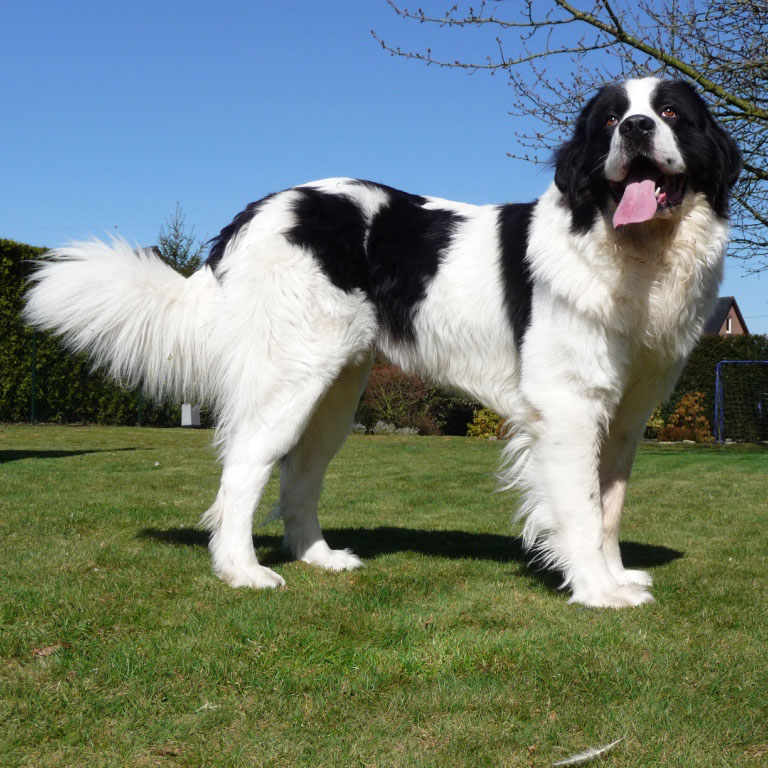
Is the Landseer Right For You?
The Landseer is known for its noble appearance, friendly nature and human orientation. A devoted family pet, the dog is regarded as gentle giant. It is very loving breed that forms strong bond with its family. It likes to be around the family, ideally acting as a lap dog and being affectionately patted. It is very gentle, considerate and playful with children and can be assigned a baby sitter role without any hesitation. This dog is naturally protective and will defend its family from any threat. It makes a very good watch and guard dog as this dog can differentiate between a guest and potential intruder.
In 5 Words
- Smart
- Devoted
- Loving
- Gentle
- Protective
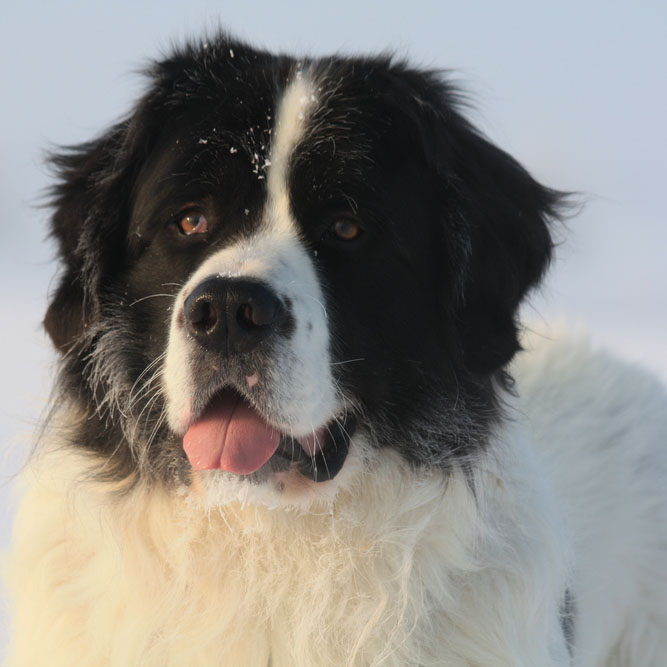
Characteristics
Learn About the Landseer
Description
General Description
The Landseer is a dog breed. Many kennel clubs consider the Landseer to be simply a black-and-white variant of the Newfoundland, but the Fédération Cynologique Internationale recognizes it as a separate breed. This separate breed is called Landseer European Continental Type.
The Landseer should convey the impression of a tall, powerful and well-balanced dog. The legs are comparatively longer than those of the black Newfoundland, especially in the male. The Landseer is elegant, harmonious, agile and hardy. The wide muzzle is rather short and squared-off. The small, triangular ears are pendant. The small eyes are dark brown; the conjunctiva should not show as it does in the St. Bernard. The nose is black. The feet are webbed for better swimming. Dewclaws should be removed on the hind legs. The tail hangs down. The water-repellent long outer coat is flat, oily and slightly wavy with a thick oily undercoat. Dogs that live indoors, however, tend to lose their undercoats. The top coat, with exception of the head, should be long and as straight and dense as possible, soft to the touch, with good undercoat, which is not as dense as in the black Newfoundland. Slightly wavy coat on back and hindquarters is not objectionable. When brushed the wrong way it falls back into place naturally. The main color of the coat is a clear white with distinct black patches on body and croup. Collar, forechest, belly, legs and tail are white. The head is black with a white muzzle and a white symmetrical blaze.
Short History of the Landseer
The Landseer is often mistaken as a colour variant of Newfoundland Dog but it has been recognised as a separate breed by FCI. It is a large dog that is named after a famous British painter, Sir Edwin Henry Landseer who created a painting (titled : A Distinguished member of Humane society) in 1838 which shows this dog saving a man from drowning. This breed originated in Germany and Switzerland. The Landseer is a tall, powerful and well balanced dog with a sweet disposition. It stands between 26.5 to 31.5 inches and weighs around 110-165 lbs. A massive and wrinkle free head starts off this breed and leads to broad skull and short but strong muzzle. It has a black nose. Almond shaped, medium size eyes come in light or dark brown colour and hold friendly expression. Medium size, triangular shaped ears are set high on head and come with rounded tips. The dog has broad and muscular neck, straight and level back and muscular loin. Deep and broad chest has well sprung ribs. The belly is slightly tucked up. Moderately long tail is well covered with dense and bushy hair. It is carried down when dog is at rest and straight when the dog is in motion or excited. This breed has a long double coat all over the body with exception of head. It comes in predominant white colour with black patches all over the body. This breed is NOT recognized by AKC however it is recognized by FCI as a separate breed.
Temperament
The Landseer Newfoundland dog is known for its sweet disposition, gentleness, and serenity. They enjoy swimming, and tend to drool, though not as much as some other giant breeds. While the Landseer European Continental Type is also sweet, affectionate and enjoys swimming he is quite different from the Landseer Newfoundland in regard to response, agility and speed.
Caring for Your Landseer
General Health
Prone to hip dysplasia. Do not let a Landseer get fat. Also prone to a hereditary heart disease called sub-aortic stenosis (SAS). Breeders should have puppy’s hearts checked by a veterinary cardiologist at 8-12 weeks of age. Adult Landseers should be cleared of SAS again before breeding.
Grooming & Bathing
Long coat of this dog needs regular brushing to remove tangles and dead hair from the coat. Bath only when necessary.
Exercise & Training
The Landseer is an obedient, intelligent, eager to please and responsive breed that will be easy to train. Positive training methods will yield most out of this dog.
This dog loves swimming but otherwise, it is not a very active dog. Infact, it can be termed as a lazy breed that likes to be indoor most of the time. If swimming is not possible, the dog should be taken for daily walks.

